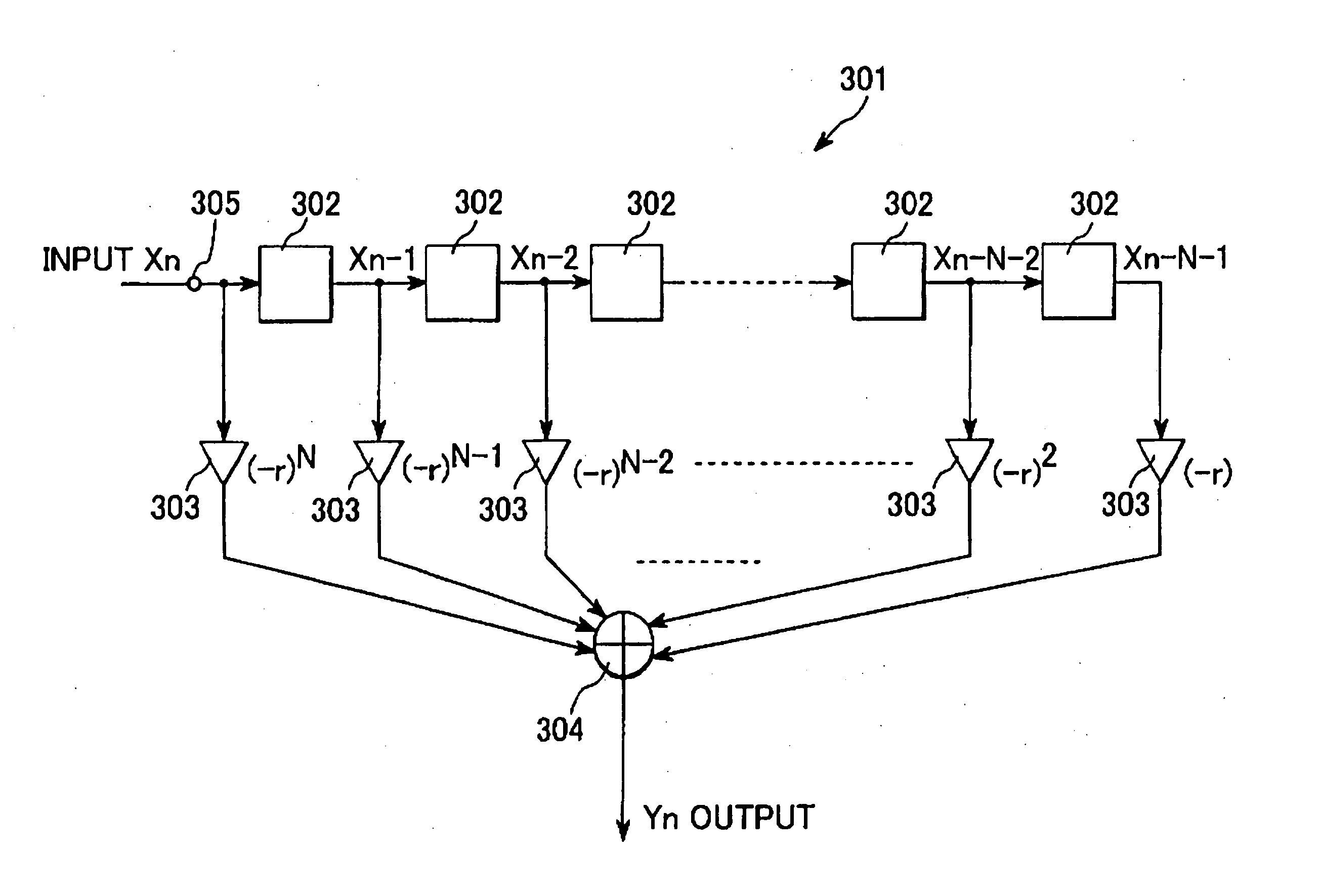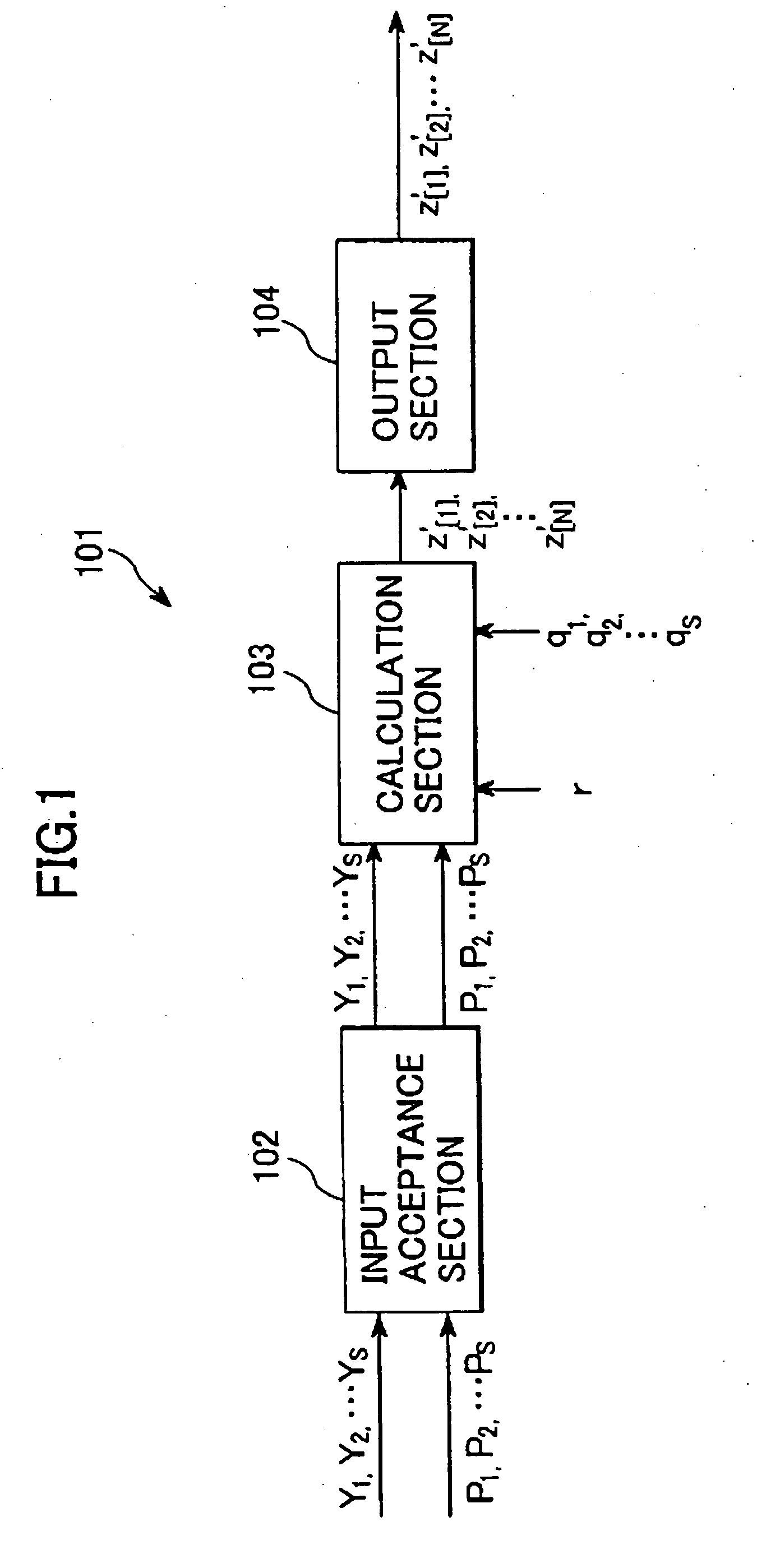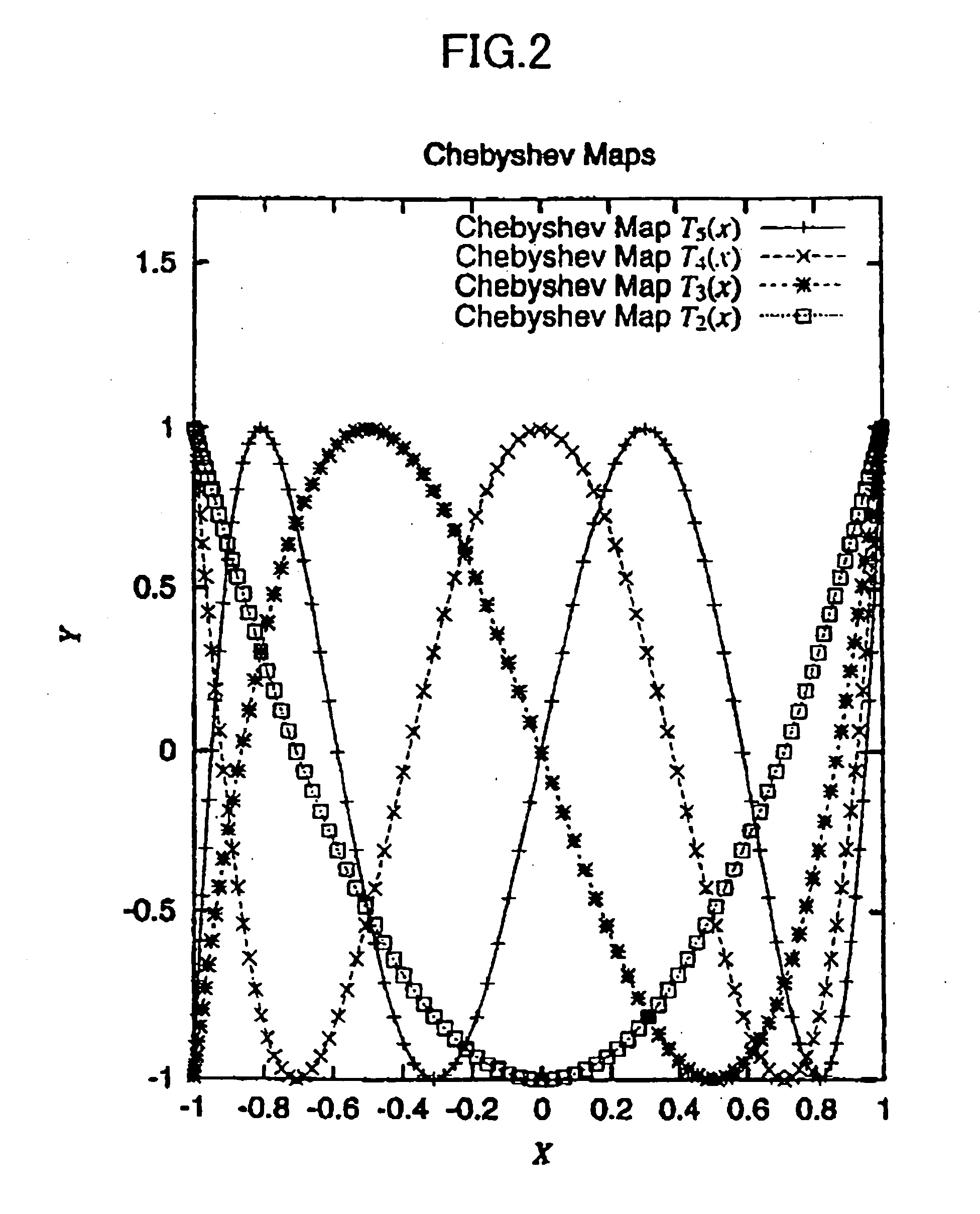Pseudo-random number sequence output unit, transmitter, receiver, communication system and filter unit
a pseudo-random number sequence and output unit technology, applied in pulse manipulation, pulse technique, instruments, etc., can solve the problem of unable to obtain accurate results by dsp implementation or computer calculation, and difficulty in building a physical circuit or device for generating spreading codes, so as to eliminate redundant calculations
- Summary
- Abstract
- Description
- Claims
- Application Information
AI Technical Summary
Benefits of technology
Problems solved by technology
Method used
Image
Examples
first embodiment
[0133]FIG. 1 is a schematic diagram (data flow chart) showing the general configuration of a pseudo-random number sequence output unit 101 that is a first embodiment of the present invention. Explanation will now be made with reference to this figure.
[0134] The pseudo-random sequence output unit 101 of this embodiment is equipped with an input acceptance section 102, a calculation section 103 and an output section 104. It outputs a pseudo-random number sequence of length N (1≦N) in response to s (1≦s) number of prescribed positive integers q1, q2, . . . , q5, a prescribed real impulse constant r (−1<r<1) and a prescribed nonzero real constant C.
[0135] The input acceptance section 102 accepts input of the following sequence initial values and integer parameters: [0136] s number of real number sequence initial values Y1, Y2, . . . , Ys; provided that −112s[0137] s number of integer parameters p1, p2, . . . , ps; provided that 2≦p1, 2≦p2, . . . 2≦ps and for which q1 mod p1≠0, q2 mod ...
PUM
 Login to View More
Login to View More Abstract
Description
Claims
Application Information
 Login to View More
Login to View More - R&D
- Intellectual Property
- Life Sciences
- Materials
- Tech Scout
- Unparalleled Data Quality
- Higher Quality Content
- 60% Fewer Hallucinations
Browse by: Latest US Patents, China's latest patents, Technical Efficacy Thesaurus, Application Domain, Technology Topic, Popular Technical Reports.
© 2025 PatSnap. All rights reserved.Legal|Privacy policy|Modern Slavery Act Transparency Statement|Sitemap|About US| Contact US: help@patsnap.com



